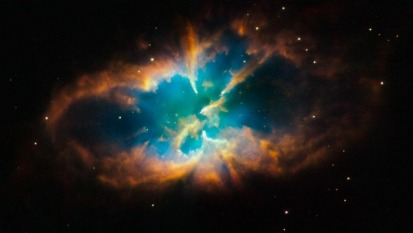The Hubble Space Telescope has imaged striking details of the famed planetary nebula designated NGC 2818, which lies in the southern constellation of Pyxis (the Compass). The spectacular structure of the planetary nebula contains the outer layers of a star that were expelled into interstellar space.
Click on the image below to get a high res image of the nebula.
The glowing gaseous shrouds in the nebula were shed by the central star after it ran out of fuel to sustain the nuclear reactions in its core. Our own sun will undergo a similar process, but not for another 5 billion years or so. Planetary nebulae fade gradually over tens of thousands of years. The hot, remnant stellar core of NGC 2818 will eventually cool off for billions of years as a white dwarf.
This Hubble image was taken in November 2008 with the Wide Field Planetary Camera 2. The colors in the image represent a range of emissions coming from the clouds of the nebula: red represents nitrogen, green represents hydrogen, and blue represents oxygen.
You can go to the Hubble website to see more wonderful images of space by clicking here.

 RSS Feed
RSS Feed